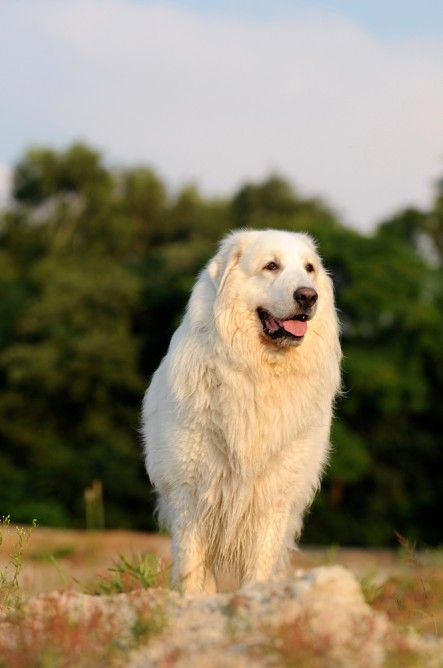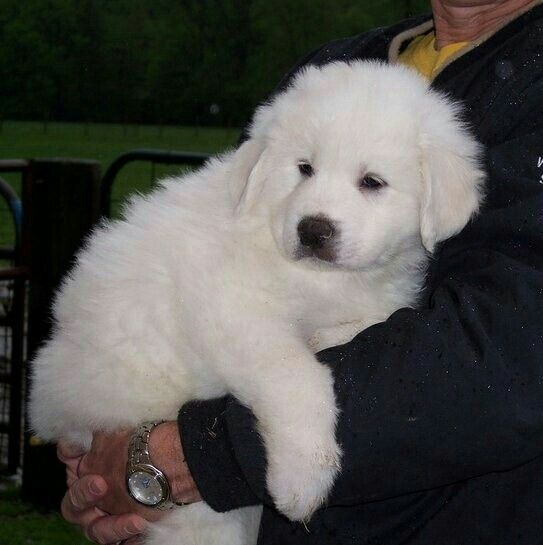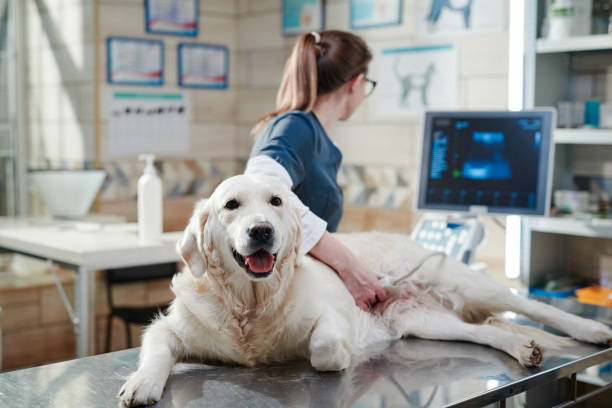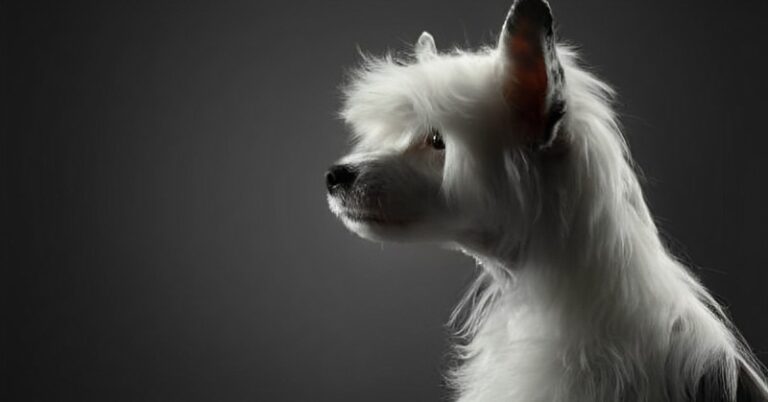What is White Golden Retriever?its Height, Weight, lifespan, care
White golden retriever were mostly bred as gundogs and came from Scotland. These breeds were crossed between 1840 and 1890 to create a new breed of retriever that could survive the harsh terrain and wet climate of the nation.
Few breeds in the vast world of canine companions win over dog lovers’ hearts quite like the White Golden Retriever. These magnificent animals have made a name for themselves because of their regal look and kind nature.
Certainly! Here’s a detailed table comparing White Golden Retriever dogs and bitches based on various characteristics:
| Characteristic | White Golden Retriever Dogs | White Golden Retriever Bitches |
| Origin | Scotland (Originally from the UK) | Scotland (Originally from the UK) |
| Height | 22-24 inches (56-61 cm) | 20-22 inches (51-56 cm) |
| Weight | 65-75 pounds (29-34 kg) | 55-65 pounds (25-29 kg) |
| Coat Texture | Dense, water-resistant, feathered | Dense, water-resistant, feathered |
| Coat Color | Creamy white to pale golden | Creamy white to pale golden |
| Lifespan | 10-12 years | 10-12 years |
| Suitable For | Families, therapy work, hunting | Families, therapy work, hunting |
| Temperament | Gentle, loyal, friendly, intelligent | Gentle, loyal, friendly, intelligent |
| Care Needs | Regular exercise, grooming, dental care | Regular exercise, grooming, dental care |
| Litter Size | Average 6-8 puppies | Average 6-8 puppies |
| Health Issues | Hip dysplasia, elbow dysplasia, heart issues | Hip dysplasia, elbow dysplasia, heart issues |

The Origins of White Golden Retriever
The conventional Golden Retriever breed, which was created in Scotland in the middle of the 19th century, is also known as the “White Golden Retriever.”
The Golden Retriever was created by breeders who wanted to produce a hunting dog that was both devoted and knowledgeable.

The White Golden Retriever is a remarkable variation of the breed with an ivory-colored coat that emerged as a result of breed diversification throughout time.
The Allure of the Ivory Fur

These retrievers have a gorgeous white coat that captivates people. Their fur is quite silky to the touch and has an attractive appearance that is evocative of just fallen snow.
Their allure is enhanced by the captivating contrast between their serene white fur and their soft eyes.
Exploring the enchanting characteristics of white golden retrievers
indeed! Like their conventional counterparts, white Golden Retrievers have a special combination of traits that make them popular among dog lovers. Golden retriever is one of the big fluffy dog breeds
The following characteristics set white golden retrievers apart:

Gentle Temperament:
A white golden retriever’s sweet and amiable disposition is well known. They are wonderful companions for families with kids and other pets because of their extraordinary tolerance and patience.
Loyalty and Affection:

These dogs develop close relationships with their human partners and show a great deal of loyalty to their families.
They are constantly ready to show their loved ones compassion and attention because of their kind disposition.
Intelligence and Trainability:
Canines with great intelligence are White Golden Retrievers. They are well-suited for therapeutic work and obedience competitions as they are rapid learners and react well to instruction.
Playful and Energetic:
White Golden Retrievers have a calm exterior but are lively and active within. They take pleasure in outdoor pursuits, particularly retrieving games that satisfy their innate retrieving inclinations.
Sociable Nature:
Social butterflies are White Golden Retrievers. They are great pets for folks with busy social schedules or other pets in the home since they love being around humans and other animals.
Beautiful Coat:
As their name implies, a notable feature of White Golden Retrievers is their gorgeous white coat.
Their entire appeal is enhanced by their coat, which is usually thick, water-repellent, and pleasant to the touch.

Adaptability:
These canines are quite versatile and do well in a variety of settings. White Golden Retrievers are adaptable and may fit in well in both busy metropolitan apartments and rural estates.
Superb Retrievers:
White Golden Retrievers possess an innate knack for retrieving, much like their Golden Retriever kin. They love to carry objects in their mouths and are often used as hunting dogs or in search and rescue operations.
Calm Disposition:
White Golden Retrievers are great therapy dogs because of their cool, collected demeanor. People are comforted by their calming presence, particularly in trying or stressful circumstances.
Protective Instinct:

White Golden Retrievers are gregarious and outgoing, but they also have a strong sense of protection, which makes them great watchdogs.
They will alert their owners if they see something strange or suspicious.
White Golden Retrievers are wonderful family, individual, and even working dogs because they possess intellect, devotion, and a sweet disposition.
Dog lovers all around the world are still enthralled with them due to their captivating beauty and endearing behavior.
Traits associated with a white golden retriever
Of course! The White Golden Retriever, often referred to as the English Cream Golden Retriever, has a graceful and unique look. The salient elements of their look are as follows:

Coat Color:
The White Golden Retriever’s coat color is what people notice the most about them. They have a gorgeous coat that flows in beautiful waves and is either creamy white or light golden, as the name indicates.
They may be distinguished from regular Golden Retrievers by their coat color, which is often a deeper shade of golden.
Coat Texture:
A White Golden Retriever’s coat is thick, resilient to moisture, and velvety to the touch. It frequently gives them a royal look by feathering the breast, back of the legs, and tail.
Build and Size:
White Golden Retrievers have a strong, well-proportioned physique. They have an athletic and powerful build and range in size from medium to giant.
Adult girls weigh significantly less, averaging 55–65 pounds (25–29 kg), but adult men normally weigh 65–75 pounds (29–34 kg). At the shoulder, they stand 21.5–24 inches (55–61 cm) tall on average.
Head and Expression:
These dogs have a large head that is somewhat rounded and has a distinct stop. Their eyes, which are frequently hazel or dark brown in hue, are kind and expressive.
The medium-sized ears are near to the head and positioned at eye level. One of their most adorable traits is their soft and compassionate look.
Tail:
Strong and quite long, the tail on a white golden retriever is usually carried at the level of the back. Thick, feathery hair covers their tails, adding to their overall attractiveness.
Gait:
White Golden Retrievers have a fluid, easy walk while they are moving. Their deliberate and graceful movements demonstrate their athletic prowess.
Overall Impression:
A White Golden Retriever exudes charm, power, and grace all at once. Their kind and perceptive eyes, together with their milky white coat, give them a striking and magnificent aspect.
They have a very amiable and accessible manner that appeals greatly to dog lovers.
The White Golden Retriever’s stunning creamy white coat, muscular frame, expressive eyes, and amiable demeanor define its physical attributes.

Their kind disposition and these characteristics make them an incredibly charming and endearing breed.
phases of a white golden retriever’s life
White Golden Retrievers, like all dogs, go through various life stages, each with its unique characteristics and care needs. Here are the typical life stages of a White Golden Retriever:
Puppy Stage (0-12 Months):

- Physical Development: Rapid growth, gaining weight and height. Baby teeth start erupting and are gradually replaced by adult teeth.
- Behavioral Traits: Curious, playful, and energetic. Puppies investigate their environment, pick up simple commands, and interact with people and other canines.
- Care Needs: Vaccinations, proper nutrition for growth, socialization, basic training, and regular vet check-ups.
Adolescent Stage (1-2 Years):
- Physical Development: Continued growth, reaching near adult size. Sexual maturity occurs, leading to potential behavioral changes.
- Behavioral Traits: Increased independence, testing boundaries, and sometimes challenging authority. Training consistency is crucial during this stage.
- Care Needs: Continued vaccinations, balanced diet, obedience training, regular exercise, and mental stimulation.
Adult Stage (3-7 Years):
- Physical Development: Full physical maturity. Stabilized size and weight. Healthy adults are active, agile, and maintain a glossy coat.
- Behavioral Traits: Settled behavior, well-trained, and emotionally stable. Enjoy regular exercise and activities with their family.
- Care Needs: Regular vet check-ups, balanced diet to maintain weight, daily exercise, dental care, and preventive healthcare.
Senior Stage (7+ Years):
- Physical Development: Gradual decline in physical abilities. Potential health issues related to aging, such as arthritis or reduced mobility.
- Behavioral Traits: Decreased energy levels, increased sleep, potential changes in appetite. Still affectionate but may require more rest.
- Care Needs: Regular vet check-ups, specialized diet for seniors, joint supplements if needed, comfortable bedding, gentle exercise, and regular dental care.
Geriatric Stage (10+ Years):
- Physical Development: Noticeable decline in physical abilities. Increased susceptibility to age-related illnesses.
- Behavioral Traits: Reduced activity, more time spent resting. Health difficulties may necessitate extra care and attention.
- Care Needs: Regular vet check-ups, specialized diet tailored for senior dogs, medications if prescribed, comfortable and warm environment, and gentle, low-impact exercises.
Understanding these life stages helps pet owners provide appropriate care, attention, and love at every phase of a White Golden Retriever’s life, ensuring a happy and healthy companionship throughout their years.
UPDATES ON WHITE GOLDEN RETRIEVER CARE TIPS

Certainly!A White Golden Retriever needs a lot of love, care, and attention. To guarantee the health and happiness of your White Golden Retriever, follow these vital care guidelines:
Regular Exercise:
White Golden Retrievers are active dogs who require regular exercise to stay emotionally and physically fit. Try to obtain 30 to 60 minutes of exercise every day.
Walking, running, and engaging in interactive play will help children stay intellectually and physically active.
Balanced Diet:
Give your dog a premium dog food that is balanced and appropriate for their size, age, and level of activity.
Don’t feed them human food, especially things like chocolate, grapes, and onions that can be poisonous to dogs. To find out what food is best for your White Golden Retriever, speak with your veterinarian.
Regular Grooming:
To avoid matting and minimize shedding, give your White Golden Retriever numerous weekly brushings.
Bathe them as needed, which is usually every two to three months or whenever they become filthy. Frequent grooming improves your relationship with them and keeps their coat clean.
Dental Care:
Dental health is essential. Brush your dog’s teeth on a regular basis with a soft-bristled toothbrush and toothpaste created exclusively for dogs. Toys and dental treats that support good oral hygiene might also be helpful.
Veterinary Check-ups:
Make sure your pet has routine veterinarian check-ups for immunizations, dental examinations, and general health evaluations at least once a year.
Frequent veterinarian appointments guarantee your dog’s health and help identify any problems early.
Training and Socializing:
Begin training your White Golden Retriever at a young age. It is crucial to know basic instructions like sit, remain, and come.
To help children become more confident and less anxious in a variety of circumstances, socialize them with people, animals, and settings.
Mental Stimulation:
Puzzle toys, treat-dispensing toys, and interactive games are all wonderful methods to engage the intellect.
Keep their minds active by providing them with training materials and novel experiences to stave off boredom and promote lifelong learning.
Safe Environment:
Make sure your White Golden Retriever has a secure area both inside and outside of your home. Clear out anything dangerous, tuck fences in, and give them a cozy, peaceful spot to relax. Don’t leave them alone for long periods of time.
Love and Attention:
Love and attention are what White Golden Retrievers thrive on. Spend time with them, showing them attention, engaging in play, and providing encouragement.
A caring atmosphere makes a big difference in their general contentment and health.

Regular Exercise:
Active dogs like white golden retrievers need to exercise frequently to keep their physical and mental well-being.
To keep them active and avoid boredom, take them on regular walks, include them in interactive play, and teach them retrieving activities.
You can give your White Golden Retriever a loving and rewarding life and make sure they stay a valued and happy member of your family by adhering to these care guidelines.
American Golden Retriever vs. English Golden Retriever
Certainly! The following table compares English Golden Retrievers to American Golden Retrievers:
| Characteristic | English Golden Retriever | American Golden Retriever |
| Physical Appearance | Typically have a broader head, sturdy build, and thick coat. | Tend to have a leaner build, with a narrower head and coat. |
| Coat Color | Creamy white to light gold. | Richer golden hues, ranging from light to dark gold. |
| Coat Texture | Dense, water-repellent, and often wavy or feathered. | Dense, water-resistant, with a straight or wavy texture. |
| Temperament | Generally calmer, gentle, and affectionate. | Energetic, friendly, and playful. |
| Trainability | Intelligent, trainable, and ready to please | Intelligent and trainable, but may have a slightly higher energy level. |
| Purpose | Primarily bred for shows and companionship. | Versatile; used in various roles like hunting, therapy, and assistance work. |
| Activity Level | Moderately active, enjoy walks and playtime. | More energetic and may require additional exercise. |
| Health Considerations | May have fewer health issues due to careful breeding. | Some lines might have specific health concerns. |
| Popularity | Popular in European countries and shows. | Predominant in the United States and widely loved there. |

see also: Mini golden retriever
Frequently Asked Questions
Are white Golden Retrievers uncommon? No. Those searching for a “white” or “platinum” golden retriever will be let down. While some Goldens appear to be quite pale in color, they are not white.
White Golden Retrievers, commonly known as “English Cream Golden Retrievers,” are highly sought-after canines that people want as four-legged friends. They are intelligent, loyal dogs who suit a wide range of humans, whether they live with small children or with the elderly.
Though all Golden Retrievers are officially one breed (Golden Retriever), there are three acknowledged subtypes: American Goldens, British (or English) Goldens, and Canadian Goldens.
Conclusion
Originating in Scotland, White Golden Retrievers embody beauty and loyalty. Their regal appearance, gentle temperament, and versatility make them ideal family companions.
From lively pups to wise elders, each life stage has unique charm. Providing love and care ensures a life of happiness, health, and boundless affection.
These dogs, with their silky white coats and intelligent eyes, leave an enduring imprint as cherished family members.






